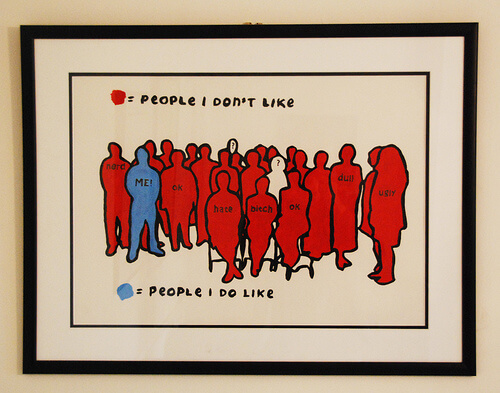Having a powerful brand message certainly drives an effective brand awareness strategy, but so does a little basic psychology.
Knowing what motivates people to act — particularly in the volatile and ever-fluctuating realm of social media — is an added advantage for every business seeking a bigger “brand footprint” in the marketplace.
In a recent article, Ed Hallen, co-founder of the email marketing platform Klaviyo, offers several fascinating examples of “social proof” – the idea that people do what others do, based on the assumption that “those actions are reflective of the correct behavior.”
Hallen offers several examples of how social proof works in social media marketing (and, by extension, management of your all-important brand reputation).
His examples follow.
Expert Social Proof
When your business gets an industry leader’s Facebook “Like,” Twitter mention, or blog post citing, it’s a sign that someone with authority (an “influencer”) has given your product or service a social media stamp of approval.
If that influencer has a significant reputation, “anything else they are involved with is seen more positively by association. This is why influencer testimonials work.”
User Social Proof
Positive online reviews, testimonials, and case studies are inherently more persuasive than a batch of statistics.
People trust and relate to what others like them have to say about a brand or business.
Wisdom of the Crowd’s Social Proof
When a business accumulates large numbers of social media followers, it ends up having a snowball effect. Others join in, drawn by the “crowd effect,” further swelling the numbers and making the brand even stronger.
Hallen goes on to say:
FOMO (“Fear of Missing Out”) is “a form of social anxiety, and it’s a compulsive concern that one might miss out on an opportunity. This anxiety is especially relevant for social media, as the sharing of what’s going on in our daily lives means you can constantly compare your status to others on these platforms.
Give Your Audience the Content They Want
Understanding your target audience inside and out is an absolute prerequisite for managing your brand reputation.
- What challenges do they face?
- How do they want to improve their lives and/or their businesses?
- What types of content can you provide that will genuinely engage and entertain them?
In addition to content itself, the way you present it will appeal differently to different audiences.
Some like to skim text.
Others enjoy watching 60-second videos.
Still others prefer the eye-catching blend of copy and graphics offered by infographics.
Writer Sara Crawford notes:
When you understand the psychology behind how to deliver your content, you encourage users to ‘like’ your posts, post comments, and share with their friends. This is the way social media becomes extremely valuable to your brand.
Track Your Content and Be Responsive
Google Analytics offers an easy way to identify the content that gains the most traction with readers and drives the most traffic to your site. Just as important, you can add the psychological component of urgency to the mix by responding to user comments and questions in a timely manner.
For example, unhappy customers these days have a disconcerting habit of announcing their displeasure on all of their social media channels. If you’re not paying attention, your brand can sustain a great deal of damage, not all of which can be repaired if your response comes too late.
But, as Jayson DeMers, founder and CEO of AudienceBloom notes,
If you’re listening, you can address the issue and seize the opportunity to show the world how great your customer service is, while also humanizing your brand.
What’s more psychologically effective than putting a human face on your brand?
A brand people can relate to — and follow loyally on social media — is strong, durable, and able to recover from any sort of brand mishap.
